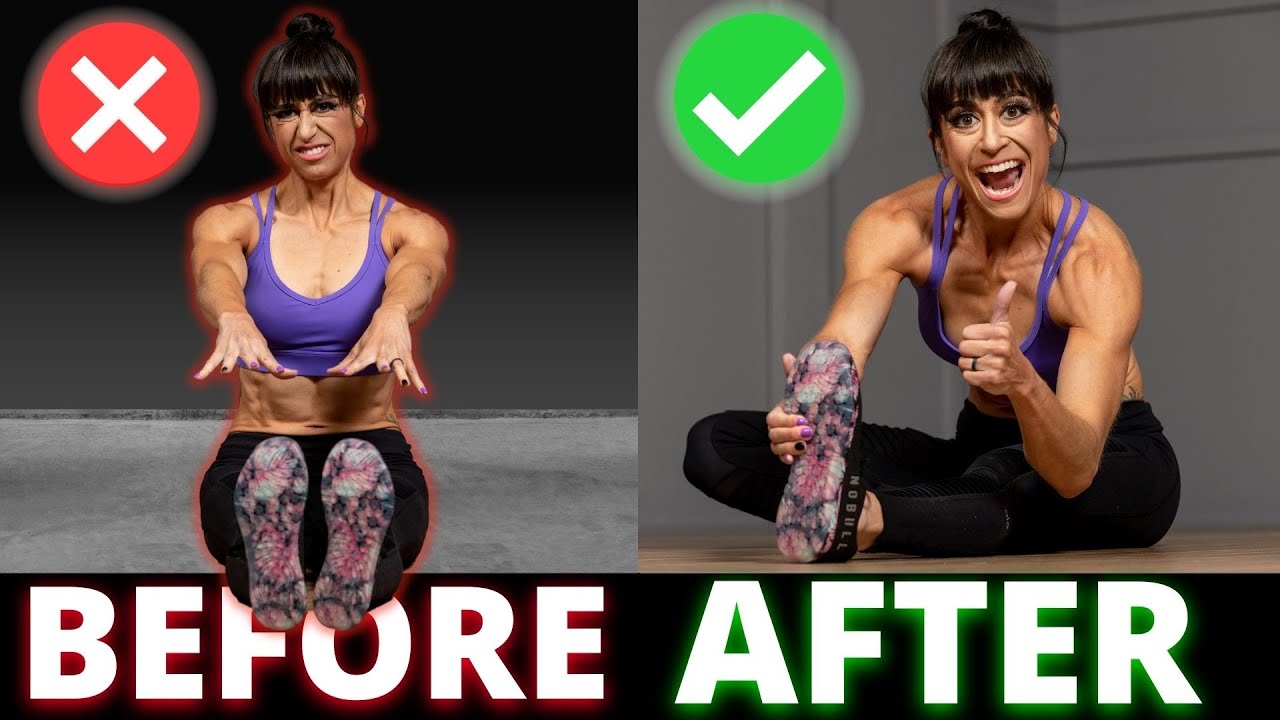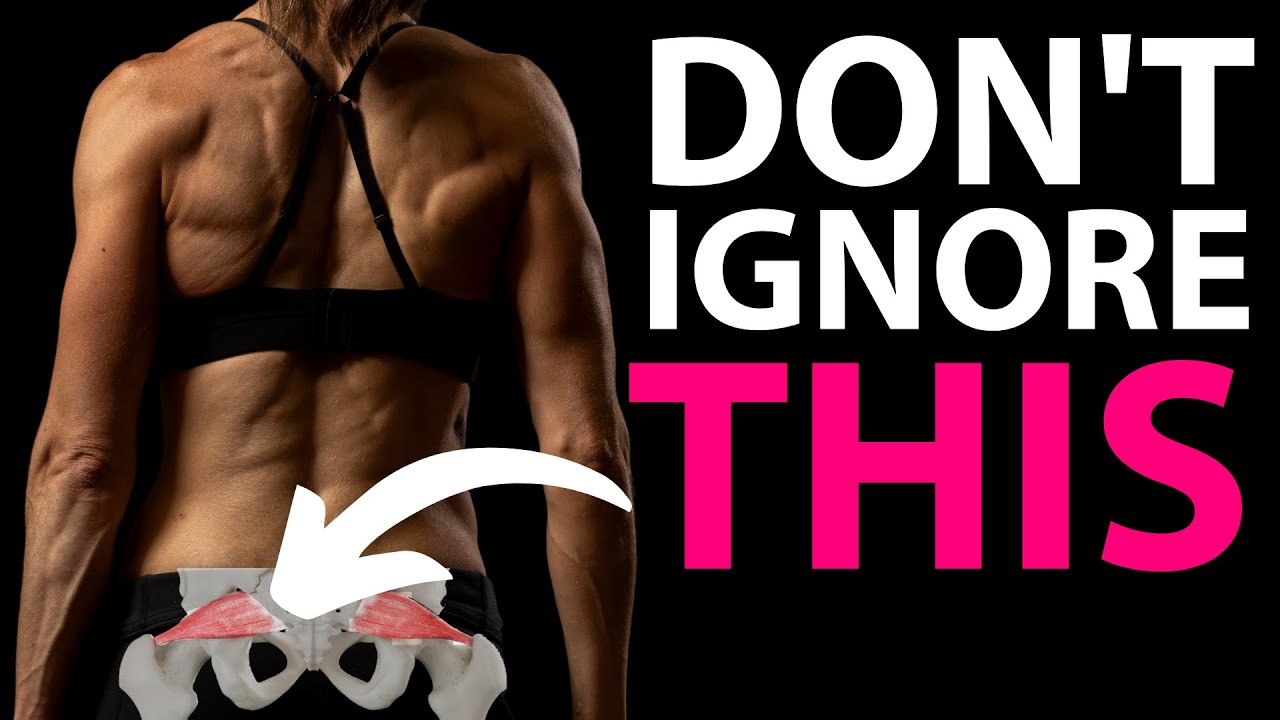
4 Tips To Fix TIGHT Hamstrings (Stop JUST Stretching!)
Can’t touch your toes?
Hamstrings always feel tight?
STRETCHING Alone isn’t the answer!
In this video I want to share why stretching your hamstrings more may actually be perpetuating the issues and what you should be doing instead.
Now I’m not saying stretching is bad, BUT just because a muscle feels tight doesn’t mean that stretching is the answer.
In the case of our hamstrings, we have to understand why they are tight to realize why stretching is often making matters worse.
Our hamstrings can often become tight because they are actually already OVERSTRETCHED or even compensating for weak or underactive glutes.
This often happens because our hip flexors become tight and overactive or even our ankle mobility is lacking.
This shortening of our hip flexors can lead to excessive anterior pelvic tilt or a change in our posture that can lead to our hamstrings becoming overstretched.
And with this change in our posture, often our glutes don’t function as they should.
So then when we stretch our hamstrings, we may get temporary relief but we aren’t actually addressing the problem.
So what should you do instead?

These 4 steps can help us improve our hamstring flexibility by actually addressing the true mobility and stability issues!
First…Foam Roll Your Hamstrings.
If you always feel your hamstrings during any glute exercises they may be synergistically dominant and working instead of letting your glutes be the prime mover.
Part of this happens because of our mind-body connection. We have that recruitment pattern ingrained which means our mind asks our hamstrings to work FIRST over using our glutes the way we should.
By first foam rolling your hamstrings, you can relax this muscle to better allow yourself to recruit your glutes. This is a great way to release the muscle WITHOUT stretching.
To roll out your hamstrings a ball on a bench works best.
Sit on the ball with it under the back of your leg. Find a tight spot anywhere down your hamstring and hold on it. Lift your leg out in front of you to tense and relax the muscle.
Do this about 5 times and move to another spot. Focus on a few different tight areas before switching sides.
If you’re doing this for the first time, it’s not bad to roll along under your butt and then down toward your knee, even moving from the outside of your leg toward your inner thigh to find what’s tight for you!
Next…Stretch Your Hip Flexors And Ankles.
Part of that perpetual hamstring tightness might be a lack of mobility at our hips or ankles.
This immobility leads to improper posture in everyday life, making our hamstrings feel like they’re constantly tight.
That’s why you want to include this side lying hip and quad stretch in your routine to stretch out those tight hip flexors as well as the bear squat to foot stretch to improve your ankle and foot mobility.
This can help you avoid your hamstrings being strained or overworked while being able to be better get those glutes engaged.
While you can do the side lying hip and quad stretch standing, the side lying variation is great if you have balance issues or can’t focus on that true hip extension while standing.
As you pull your heel back toward your butt, sqeeuze your glute to truly extend your hip. The knee flexion and hip extension will stretch out those hip flexors.
If you can’t reach your foot, you can loop a towel around your ankle to pull your heel back with that.
Relax out and repeat that same movement. Really focus on engaging the glute to truly extend that hip and stretch those hip flexors.
If you feel your hamstring cramp as you bring your heel back in, conscious relax your foot over allowing your ankle to flex. And focus on that glute!
With the bear squat with foot stretch, you’ll work to improve your ankle mobility as well as your foot mobility.
With this stretch, start on your hands and knees then sit back on your heels. You can rock side to side sitting back. Then place your hands back down on the ground and lift your butt up toward the ceiling as you drive your heels down toward the ground.
You can pedal your feet or hold for a second then lower down and sit back.
If you can’t sit back on your heels without pain, or have knee pain kneeling down, you can do a great ankle mobility movement, placing the ball of your foot on a plate weight or dumbbell and then driving your knee forward while keeping your heel down.
This move is best done without shoes on if you can but will then be more intense on your toes.
Now let’s address your glutes.
Focused glute activation moves like the glute bridge will not only stretch out your hip flexors but they’ll improve your hip stability through strengthening and activating your glutes.
Strong glutes mean you won’t be relying on those hamstrings as much so they don’t just keep feeling tight from being overworked!
The one thing you have to be conscious of though is WHAT DO YOU FEEL WORKING?!
If you let your hamstrings compensate while doing the right moves, you’ll perpetuate your hamstring issues and they will keep feeling tight.
In order for the glute activation work to pay off, you have to feel your glutes working as that prime mover.
If you struggle with even that bodyweight glute bridge, try the frog bridge instead. That external hip rotation can be helpful. Or you can use a mini band to even help engage that glute medius more which will help the glute max fire better.
Just make sure you aren’t arching your back or pushing yourself backward as you do the move.
Focus on a slight posterior pelvic tilt and only bridging up as high as you can control using your glutes!
For more tips to help you really use the glute bridge to improve your hamstring flexibility by improving your glute activation, CLICK HERE.
Using these key moves you can improve your hamstring flexibility and see those results truly last.
Stop wasting time stretching and address the true mobility and stability issues that are going on!




